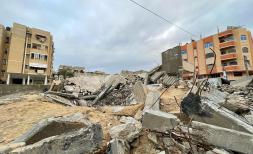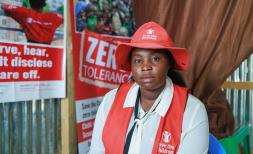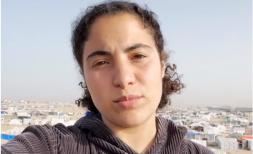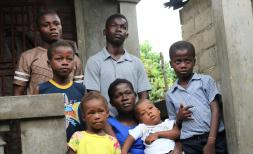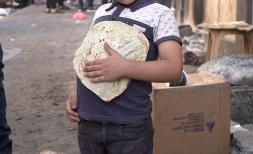Child Protection in the Digital World: Why is it needed?

Rama*, 14, takes photos of her sister Hiba*, 17, playing football in Za’atari camp for Syrian refugees, Jordan. Photo: Jonathan Hyams / Save The Children
Every half a second a child goes onto the internet for the first time. This is a well-worn statistic but one that continues to capture the imagination. Children are entering the digital environment at a pace like we have never seen before. As a result, organisations like ours are rapidly evolving our approaches to make better use of digital technologies and get children online.
The opportunities and benefits are abundantly clear, but so are the real dangers to children’s physical and mental health and wellbeing. This is what children are telling us too.
Last week, I heard this message loud and clear in Zaatari refugee camp in Jordan, the world’s largest camp for Syrian refugees. Families and children living here have fled conflict in their country that has been ongoing for over 12 years. We were there to talk to children about Save the Children’s top five child protection priorities, but throughout the day the conversation kept coming back to protection from digital harm.
Like other children around the world, a significant portion of their lives is now spent in the digital environment. Despite the extremely challenging circumstances, this is what they wanted to talk about and were quick to provide possible solutions for training and support to be safe online.
I see this as validation for uplifting this issue at Save the Children - and it is why we have made protection from digital harm one of our top five priorities, with child protection at its heart but including a focus on participation and wellbeing.
This is so important because while children are adapting to the digital world, their caregivers and the laws, policies and services meant to protect and support them are often not. The knee-jerk restriction of children’s access to digital technology is not going to help keep them safe online. They just won’t ask for help, and that is significantly more dangerous. Particularly given the very real risks for cyberbullying, abuse, trafficking, exploitation and even online radicalization.
The fact is that the internet was not designed with children’s safety in mind and their rights are under direct threat online, despite protection under the UNCRC and other relevant international laws [1]. If we are to achieve our 2030 Breakthrough ambition of a world that no longer tolerates violence against children, we must protect children both online and offline.
This is a whole-of-society imperative, and I think Save the Children has a unique added-value in the uniting role that we can play. I want to see us becoming the leading global organisation uniting children, business, civil society, and government to accelerate children’s protection, participation, and wellbeing online and offline. This means creating a safe digital environment in which children’s rights are respected, but it also means working to ensure safe access for the estimated two-thirds of school aged children who currently don’t have access to the internet at home.
We have a window of opportunity to influence laws and policies affecting children’s rights in the digital environment. Regions and countries are busy developing their legal architecture, there’s a UN General Assembly Resolution being debated as well as talks of a Global Digital Compact. This window will soon be closed, and so we must work with children and young people, like those I met in Zaatari, to ensure that children’s needs and rights are at the very heart of this.
As I write, I am in South Africa with my 8-year-old daughter, Nina, as she navigates her reading App and downloads YouTube Kids videos. The internet is becoming a big part of her life, and her future likely depends on her proficiency in the digital world. In my role at Save the Children I am going to fight for a safe digital childhood for all children, and here at home I’m going to try keep Nina safe by giving her the tools, education, support and open communication she needs to thrive in this space.
[1] General comment No.25 (2021) on Children’s Rights in Relation to the Digital Environment. CRC/C/GC/25
